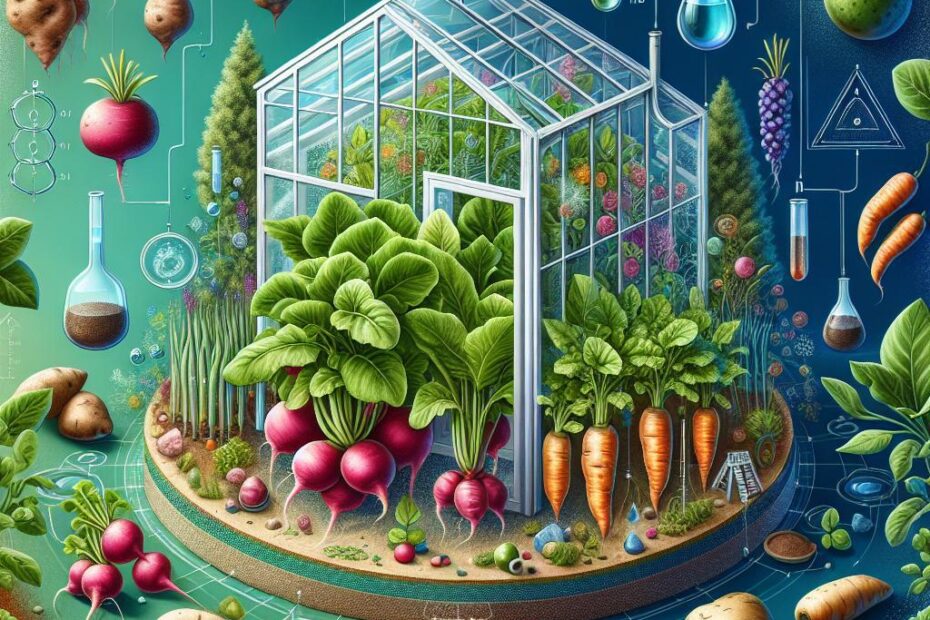Title: The Ultimate Guide to Acid-Loving Vegetables: Benefits, Tips, and Growing Strategies
Introduction:
When it comes to cultivating a thriving vegetable garden, understanding the unique needs of different plants is essential. One key factor to consider is the soil’s pH level, as this can greatly impact the growth and health of your crops. Acid-loving vegetables, also known as ericaceous plants, prefer acidic soil conditions to thrive.
In this comprehensive guide, we will explore the world of acid-loving vegetables, their benefits, and provide valuable tips and strategies for growing them successfully in your garden.
Benefits of Acid-Loving Vegetables:
- Rich in nutrients: Acid-loving vegetables are often packed with essential vitamins, minerals, and antioxidants that are beneficial for our health.
- Improved flavor: Vegetables grown in the right pH conditions tend to have a more vibrant flavor profile, making them a delicious addition to any meal.
- Increased productivity: By providing the right soil conditions, acid-loving vegetables are more likely to grow vigorously and produce higher yields.
- Pest and disease resistance: Healthy plants are more resilient to pests and diseases, reducing the need for chemical interventions.
Common Acid-Loving Vegetables:
- Tomatoes
- Peppers
- Potatoes
- Blueberries
- Radishes
- Rhubarb
- Garlic
- Onions
Understanding Soil pH Levels:
Soil pH is a measure of the acidity or alkalinity of the soil. The pH scale ranges from 0 to 14, with 7 being neutral. Acid-loving vegetables typically thrive in soil with a pH level between 5.5 and 6.5. To determine the pH of your soil, you can use a simple soil test kit available at gardening stores or consult with your local agricultural extension service.
Tips for Growing Acid-Loving Vegetables:
- Test your soil: Before planting, it’s crucial to know the pH level of your soil and make any necessary adjustments to create an acidic environment.
- Amend the soil: To lower the pH of your soil, you can add organic matter such as peat moss, pine needles, or compost.
- Mulch: Applying mulch around your plants can help retain moisture and regulate soil pH levels.
- Choose the right varieties: Select vegetable varieties that are specifically bred to thrive in acidic soil conditions.
- Water wisely: Acid-loving vegetables prefer consistent moisture, so be sure to water them regularly, especially during dry spells.
Practical Tips for Growing Acid-Loving Vegetables:
- Consider planting in containers: If your soil pH is difficult to adjust, growing acid-loving vegetables in containers filled with acidic potting soil can be a convenient alternative.
- Use organic fertilizers: Organic fertilizers such as compost, manure, or fish emulsion can help nourish your plants while maintaining the optimal pH levels.
- Rotate crops: To prevent nutrient depletion and disease buildup, rotate your acid-loving vegetables with crops that have different pH requirements.
Case Study: Growing Blueberries in Acidic Soil
- Blueberries are notorious for their preference for acidic soil conditions, with a pH level of 4.5 to 5.5.
- Plant blueberry bushes in a sunny location with well-drained, acidic soil enriched with organic matter.
- Mulch around the base of the plants with pine bark or wood chips to maintain moisture and regulate pH levels.
- Prune blueberries regularly to improve air circulation and promote fruit production.
First-hand Experience:
“I’ve been growing acidic-loving vegetables like tomatoes and blueberries in my garden for years. By ensuring the soil pH is within the optimal range, I’ve been able to enjoy bountiful harvests of delicious, nutrient-rich produce. It’s incredibly rewarding to see these plants thrive under the right conditions.”
Conclusion:
In conclusion, understanding the needs of acid-loving vegetables is crucial for successful gardening. By providing the right soil conditions, nutrients, and care, you can enjoy a thriving vegetable garden filled with vibrant and flavorful produce. Whether you’re a seasoned gardener or just starting out, incorporating acid-loving vegetables into your garden can be a rewarding experience. Remember to test your soil, amend it as needed, and follow our tips and strategies for optimal growth and productivity. Happy gardening!
Hopefully, this comprehensive guide has provided you with valuable insights into the world of acid-loving vegetables and inspired you to cultivate a thriving garden filled with nutrient-rich and delicious crops.
HTML Table Example:
| Common Acid-Loving Vegetables | Optimal pH Level |
|---|---|
| Tomatoes | 5.5-6.5 |
| Blueberries | 4.5-5.5 |
| Peppers | 5.5-6.5 |
